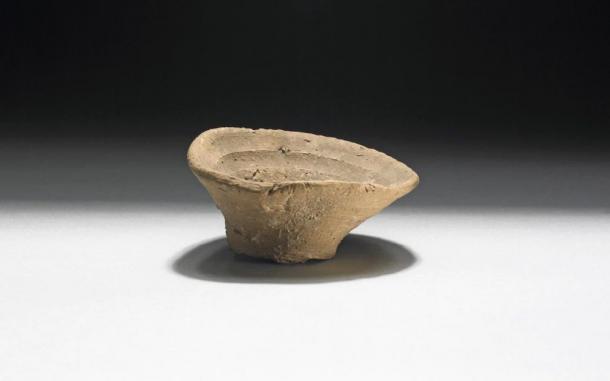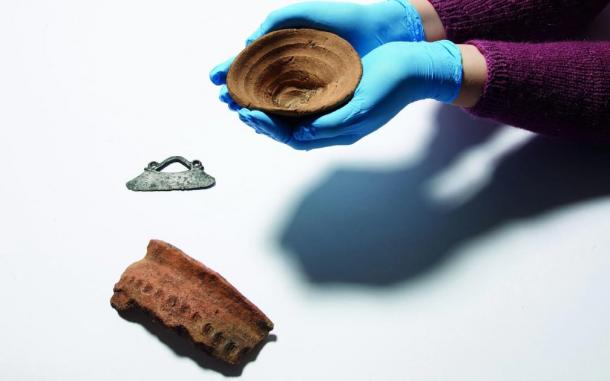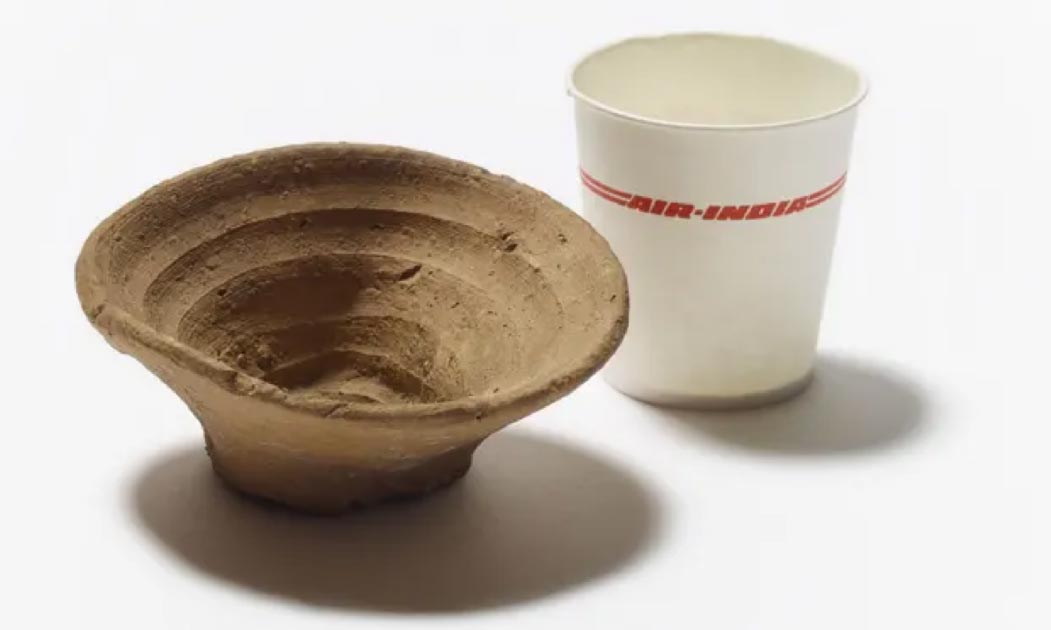3500-Year-Old Minoan Cup Proves Ancients Weren’t Green Either
A disposable Minoan cup forged by the early Mediterranean civilization will be displayed in a “stunning showcase,” which evaporates the cultural myth that ‘single-use’ crockery is a modern creation.
The clay artifact was created and used by ancient Minoan people who inhabited several Greek islands, including Crete between about 2700 to 1100 BC. According to a curator at the British Museum in London, where the cup is being exhibited as part of an exhibition entitled “Rubbish and Us”, they invented throwaway containers to drink wine from simply “because they did not want to do the washing-up.”
- Controversy Over the Ladies in Blue: Is Most Famous Fresco of the Minoans Just a Modern Interpretation?
- Origins of the Mysterious Minoans Unraveled by Scientists
- Getting to the Bottom of the Captivating Cup of the Ptolemies

A close-up of the ancient Minoan cup. (Trustees of the British Museum / PA)
Ancient Origins of Our Disposable Culture
The name ‘Minoan’ derives from the mythical King Minos, after the famous site at Knossos with the mythical labyrinth and its minotaur. In reality, the Bronze Age Minoan civilization was centered on the Aegean island of Crete. Minoans represent the first advanced civilization in Europe who not only developed writing systems and a massive trade network, but they also constructed enormous building complexes with advanced tools and embellished them with stunning artworks.
According to a report in The Express, experts at the British Museum believe Minoans used these disposable cups around 3,500 years ago and Julia Farley, a curator at the museum, says the disposable items were “borne out of people’s aversion to having to do the washing-up after a night of hard partying.” The curator added that this new display would hopefully encourage people to be more mindful of the amount of stuff they throw in the bin.

The ancient Minoan cup that will go on show in the British Museum. (Trustees of the British Museum )
Time to Find a Balance
Archaeologists have excavated thousands of handleless, conical clay Minoan cups from excavation sites on the island of Crete and at the palace of Knossos. Farley also told the PA news agency that elite Minoans were “showing off” their wealth and status by throwing these great big parties, feasts and festivals. People back then were getting together in large groups and much like today “nobody wants to do the washing-up,” added Farley.
Speaking of the rubbish produced by humans, Farley explained “some rubbish is an unavoidable by-product of being human,” and that humans “are tool-using animals who wear clothes.” She went onto say that while nothing lasts forever, it was “high time we people found a balance.”
From Minoan Cups to Environmental Catastrophe
The elite Minoans discarding clay pottery would certainly have created a mess. In particular, with piles of broken clay cups taking sometimes several thousands of years to rot back into the muds from which they came. But today’s disposable culture unfortunately uses plastic cups and packaging, which creates a much graver problem, with some forms taking tens of thousands of years to degrade.
The word ‘plastic’ is derived from the Latin “plasticus,” which is derived from the Greek “plastikos” that was used to describe something able to be molded or fit for molding. This terminology was actually used in the 17th century, long before the first plastic material, ‘Parkesine’ was invented. Plastics are not just one material, but a wide family of different materials. Today they can be fossil-based or bio-based, and in both cases, they can also be bio-degradable.
According to Statista.com, China is one of the largest producers of plastics in the world, accounting for more than one quarter of the global production, which in 1950 was only 2 million tons per year. Since then, annual production has increased nearly 200-fold reaching 381 million tons in 2015, which according to Our World In Data is roughly equivalent to the mass of two-thirds of the world population.

Bulldozer working to move waste showing the buildup of plastic on our planet. (Perytskyy / Adobe stock)
The Future of Disposables
In 2018, the global production of plastics reached 359 million metric tons with 62 million metric tons produced in Europe alone. The significance of this is clearer when we summarize global plastic production over the period of 1950 to 2015, which is an enormous 8,300 million tons.
Our World In Data reports that 2,500 million tons (30 percent) of primary plastics was still in use in 2015, and that 4,600 million tons (55 percent) went straight to landfill or was discarded. 700 million tons (8 percent) was incinerated, and 500 million tons (6 percent) was recycled. Of this recycled plastic, 100 million tons was still in use, 100 million tons was later incinerated, and 300 million tons was later discarded or sent to landfill.
Thus, of the 5,800 million tons of primary plastic no longer in use, only 9 percent has been recycled since 1950. This is why we now see so many turtles, seabirds and fish being driven to extinction through plastic polluted oceans. And knowing all this, while the Minoans were throwing away clay and might be forgiven, they were among the first cultures to have ‘disposable attitudes’, which have continued up till today.
Top image: The Minoan cup, shown here next to a modern throwaway container that washed up in the Pacific. Source: Trustees of the British Museum
By Ashley Cowie



















